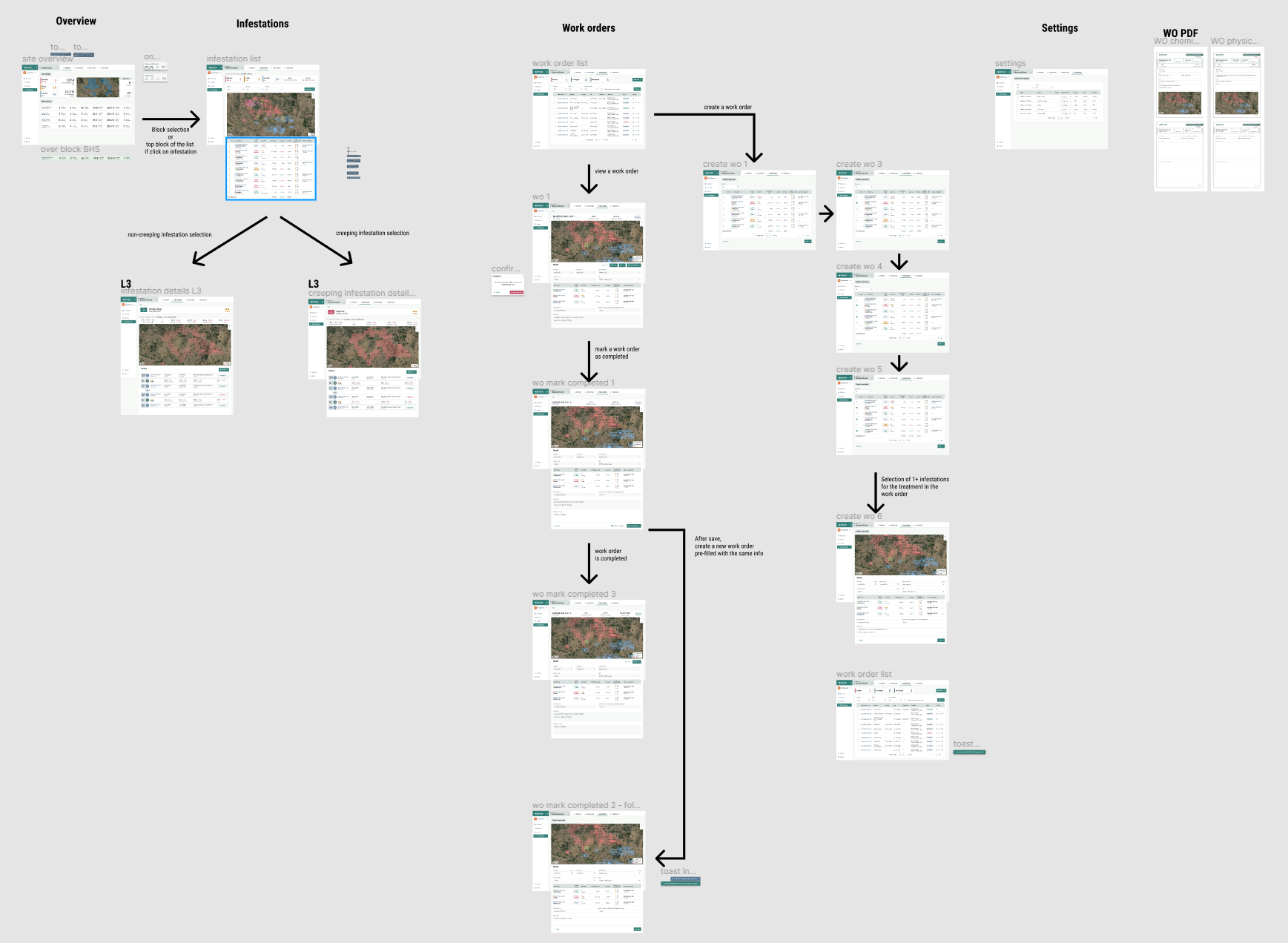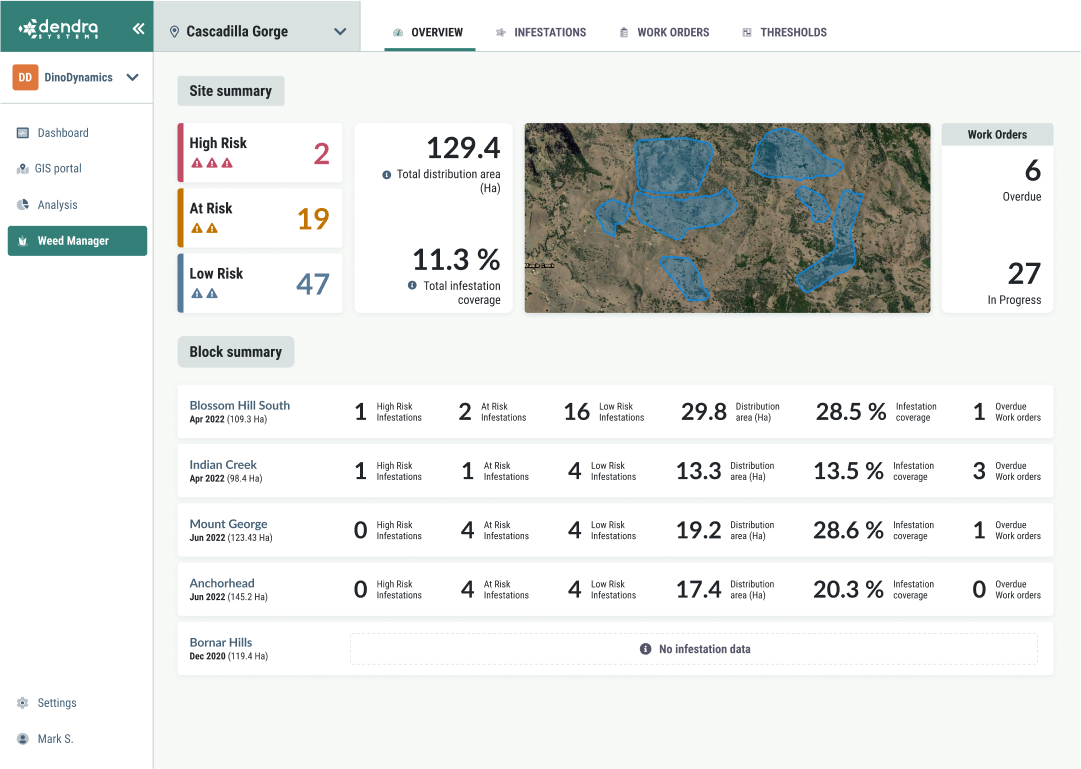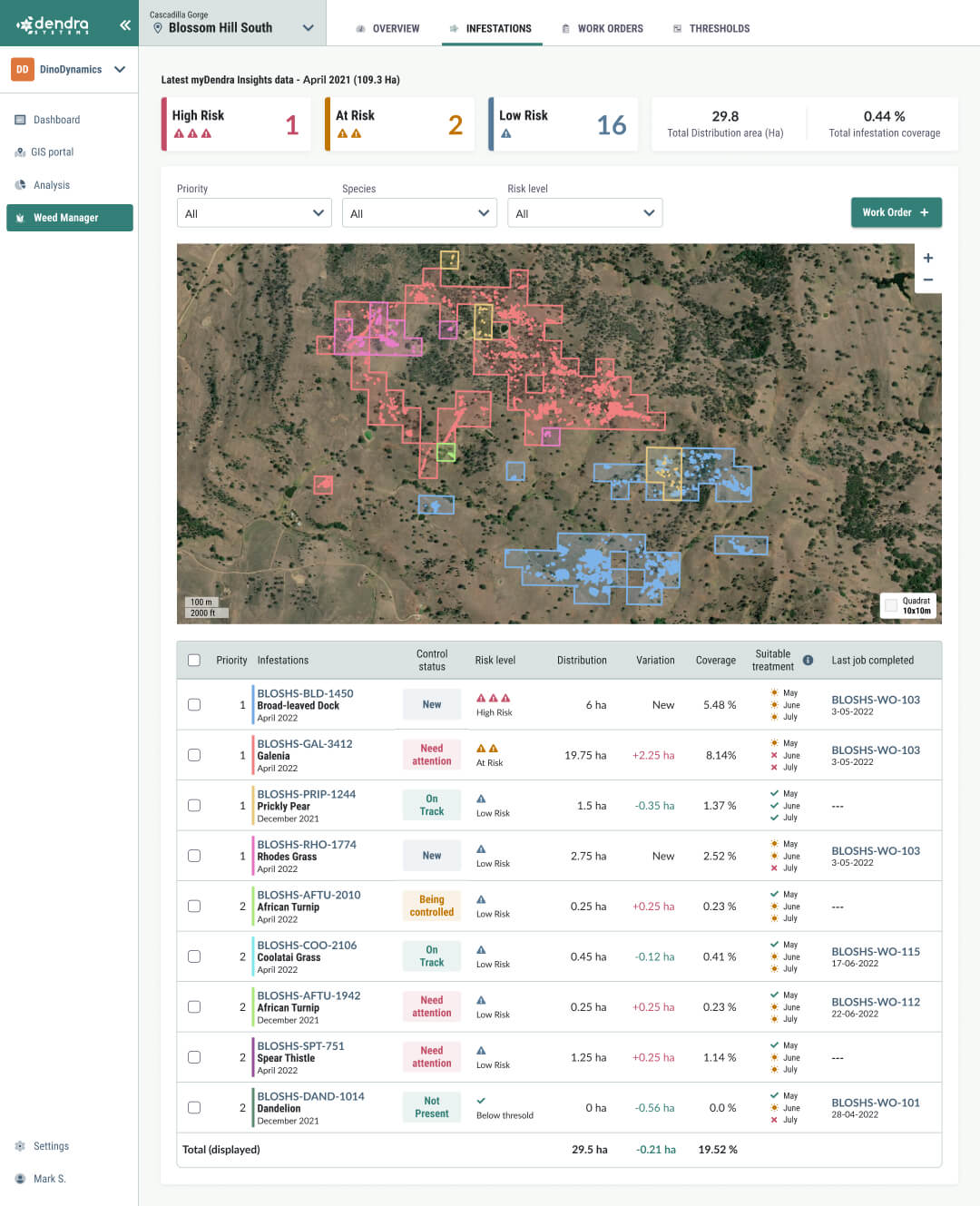
Management Suite
Background
As part of the overall improvement of Dendra's customer-facing portal, I led the development of the Management Suite, aimed at providing users with robust tools for tracking and managing their ecological restoration efforts. This suite began with the design and creation of the Weed Manager, and after its release, work commenced on the Erosion Manager, each addressing different needs and processes for eradicating weeds and dealing with erosion, respectively.
My role
Senior Product Designer
Tools
Figma, Miro, MixPanel, Google analytics
Duration
8 months
Brief
Problem Statement
Dendra's portal initially lacked the ability to compare surveys or record actions taken by customers, making it difficult for users to track their progress. Users had to navigate between the GIS portal and the dashboard to gather insights, which was inefficient and fragmented. The goal was to create dedicated modules that streamlined these processes and provided more actionable insights for specific focus activities like weed management and erosion control.
Stakeholders and Team Collaboration
I collaborated with the head of product, internal specialised scientists, and the development team. This collaboration was essential in defining the product strategy and ensuring the feasibility of our designs.
Goals and Objectives
The primary objectives of the Weed Manager and Erosion Manager were to provide tools tailored to the unique needs of each activity. Weed management required a different approach, planning, and monitoring compared to erosion control. A key challenge for the Weed Manager was identifying common ground among our diverse customer base to deliver a universally applicable SaaS solution.
Process
Research and Discovery
During the discovery phase, I conducted multiple remote user interviews to understand customer needs and workflows. Initially, we assumed that users needed precise data for each survey to understand the current situation. However, key findings revealed that users found it more important to know the trends between surveys, as this provided insights into the effectiveness of their actions. Visualising the timeline of weed infestations and tracking their evolution was crucial.
Design Process
Using Figma and the component library created during the portal redesign, I followed the double-diamond approach to explore and refine the tool's direction based on usability testing. Wireframes and high-fidelity prototypes were used to iterate and gather feedback from users.
(Prototype flow - first round of usability testing)
One key feature developed was the map comparison tool, which allowed users to visually compare two surveys to see where weeds had disappeared or grown. This was critical for understanding the impact of treatments on weed infestations.
(Map comparison mockup)
Design System
Building on the atomic approach, I extended the design system to include new components for KPIs, history, and forms. This approach involved using small components to create larger, more complex ones, ensuring consistency and flexibility. The new UI elements focused on representing key data clearly and were designed to be recognisable and usable across all tools in the suite.
Data Visualisation
Presenting critical KPIs within the appropriate context was essential for providing the right insights. The overview and trend analysis were particularly important, so variations between surveys were color-coded and made highly visible. The innovative map comparison tool offered instant understanding of trends with spatial data, enhancing the decision-making process.
(Weed manager - site overview)
(Weed manager - infestation details)
(Weed manager - infestation list)
Implementation
Implementing the Management Suite required a close collaboration with the development team to ensure a seamless integration with the existing portal. We adopted an incremental approach, launching the Weed Manager first and gradually rolling out new features. This approach allowed us to gather continuous feedback and make necessary adjustments in real-time. Ensuring the new modules worked seamlessly with the pre-existing infrastructure was a challenge, but regular communication and agile development practices helped mitigate potential issues. The design system played a crucial role in maintaining consistency and speeding up the development process, allowing us to deliver a polished product efficiently.
Outcome
The development of the Management Suite established a consistent approach for all management tools, starting from Site & Block overview to detailed insights. Users could manage their own thresholds for defining risk levels, giving them control and preparing them for future challenges. The Weed Manager was immediately adopted by all customers, with a 100% subscription rate among those dealing with weed infestations. This success led to numerous requests for additional tools, such as the Erosion Manager, which was already in the design phase. Customers recognised that the suite's tools would help their teams manage various aspects of their restoration plans more effectively.
Takeaway
The intensive research phase was instrumental in understanding what our customers truly needed for their restoration projects. Clearly visualising the impact of their actions in the field was eye-opening for them and provided the ability to evaluate the efficiency of treatments or actions. The variety of regulations within Australia and globally required us to create location-agnostic tools that focused on core needs and activities. The complexity of the data required innovative visualisation tools and complex screens, which were challenging to design and required multiple iterations to perfect.